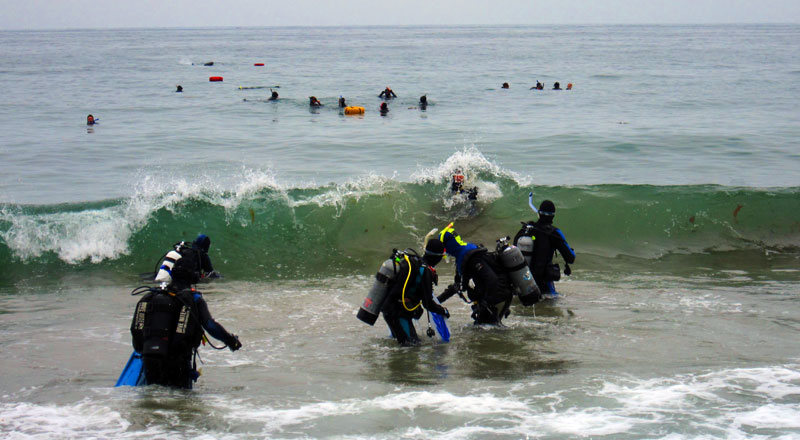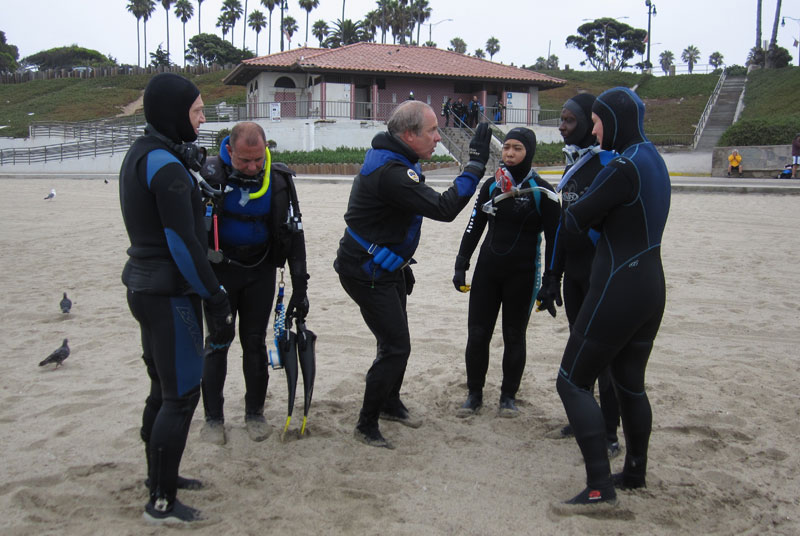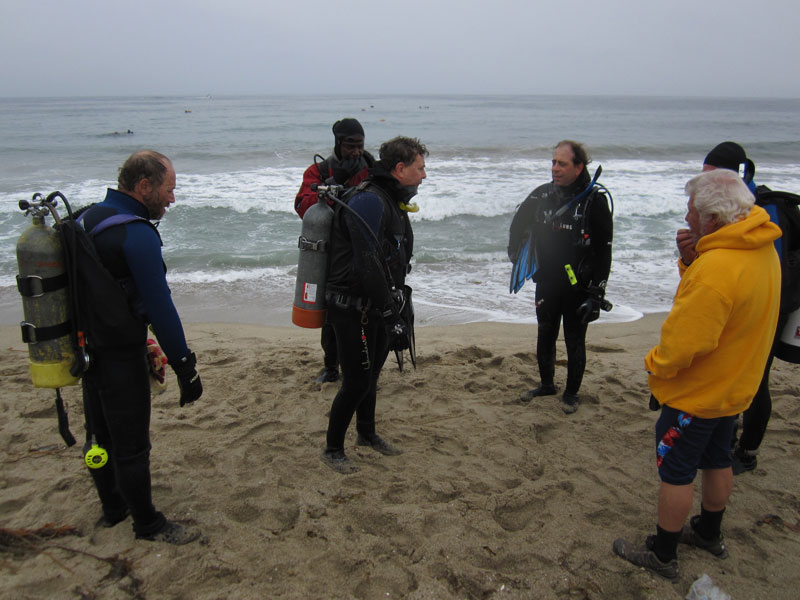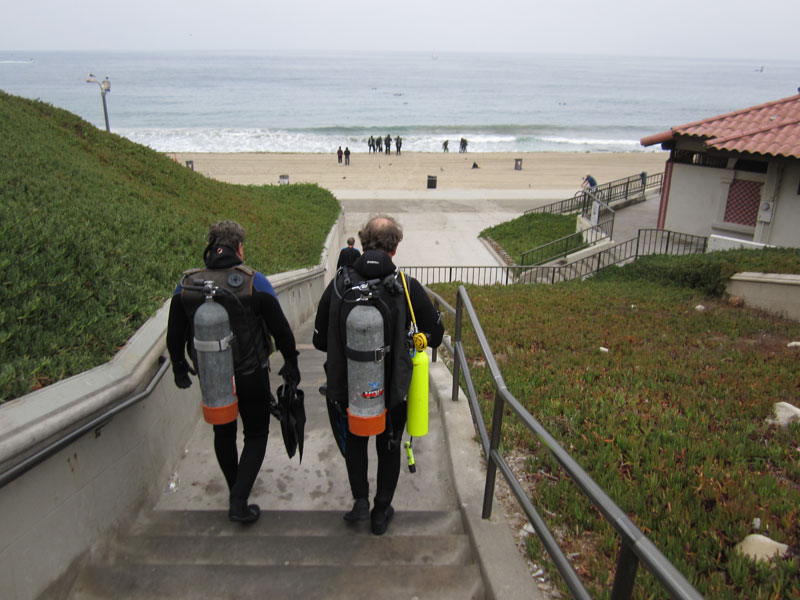How would you define an advanced diver these days? Is it someone diving doubles? Is it a local diver who has completed hundreds of dives off the California coast? Is it closed circuit? Certainly everyone diving today has a slightly different take on what they consider advanced. With certifying agencies issuing Advanced Open Water C-cards after a handful of dives, it’s possible for a new diver to attain that advanced rating with only 8-10 dives under his weight belt. But if you’re around the LA area, there’s another option available to you for continued dive training.
We recently took a look at LA County’s free Rocks, Rips, Reefs Program. It’s a great free program that runs once a month over each summer season. LA County Scuba runs another class over the summer as well. While this one is not free, you certainly get your money’s worth!
Words and photos by Nate Green
LA County Scuba’s Advanced Diver Program (ADP) spans 10 weeks over each summer, includes over 100 hours of formal training (including at least 14 open water dives), and has been the most well-respected recreational dive training program since its inception in 1964. Upon completion, students definitely fulfill the skills and qualifications of almost anyone’s definition of an advanced diver, and receive an LA County Scuba C-card to that effect. Students can also be qualified as NAUI Master Divers, and have the opportunity to receive their NAUI Nitrox and Rescue Diver certifications during the program.
This is a serious training program, with educational goals for all levels of divers. For the novice diver, ADP will introduce you to the varied diving environments along the California coast. You will cover specialized topics that basic OW training cannot tackle. In an effort to remove the hesitation and uncertainty that many new divers feel, you will learn about dive planning and rescue skills. You will meet new dive buddies, as well as leaders of the Southern California dive community. For the more experienced diver, this course is a chance to elevate your diving skills to the next level. You will expand your knowledge, learn new techniques, and be introduced to new diving areas. Regardless of your experience level upon entry to ADP, you will emerge as an advanced diver with great practical knowledge of the Southern California coast.
So, how do you gain all this experience and training? You dive…a lot! While instruction is split between lecture, pool training, and open water dives, the schedule this year calls for 13 OW dives over the 10-week course. Dive sites include Redondo Beach, Catalina, the Long Beach Back Bay, and Castaic Lagoon. The in-water training topics are just as varied as the dive sites, including search and salvage techniques, underwater mapping, and rescue/first-aid training; the usual advanced dive topics (deep dive, night dive, and navigation) are covered as well.
In the lecture portion of the class, divers learn about a wide range of topics from many Southern California industry leaders. Some lecture topics this year are: oceanography, dive physiology, dive emergency management, decompression theory, and marine life identification. Speakers include Ken Kurtis, Dr. Karl Huggins, and Mike Shaadt, to name a few. The class schedule usually alternates between a lecture weekend and a dive weekend to keep things moving. This way, divers have the chance to apply what they’ve learned in an open water scenario shortly after the topic is discussed, which helps with understanding and retention.
Most current Southern California divers will find that they meet the eligibility requirements for ADP already. Prospective students must be at least 15 years of age, and have a basic SCUBA certification from a recognized agency. Divers are required to provide their own gear throughout the 10-week course, so owning your own rig is definitely advisable. A current CPR and First-Aid certification must be completed by the end of the course; and a diving medical exam report made by a qualified physician is due on the first day of class as well. Lastly, the time commitment to such training is something that should be carefully considered. There are 16 sessions over the 10-week course schedule, which account for the 100+ hours of training. Additional time for studying, preparation, and commuting to and from the sessions should be factored in as well.
If you’re anything like me, by now you’re probably thinking that ADP sounds awesome, but that with all the instruction involved, it must be cost-prohibitive. Well, tuition this year comes in at $595, and includes your boat ride for class. Keep in mind that this is tuition only, and only for your LA County C-card. If you want to leave the course with your NAUI Nitrox, Rescue, and Master Diver certifications, there will be additional costs associated with each certification. While ADP is decidedly more expensive than a normal advanced class, nothing out in the recreational world comes close to the level of instruction received. And when you consider the amount of time the class runs, as well as the option to knock out advanced training, Nitrox, Rescue, and Master Diver certifications all at once, all while potentially starting from a Basic OW cert, it looks pretty attractive!
Think ADP is for you? This year’s program is already underway, so mark your calendars for next year and check out www.lacountyscuba.com/adp-abt.htm for all the forms, dates, and information you will need to apply.
Words and photos by Nate Green
©2014. No content may be copied or used in any form without express written permission.




